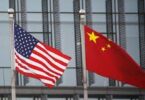Daniel Kliman, Rush Doshi, Kristine Lee and Zack Cooper
Since its launch in 2013, what China calls “One Belt, One Road” has emerged as the corner-stone of Beijing’s economic statecraft. Under the umbrella of the Belt and Road, Beijing seeks to promote a more connected world brought together by a web of Chinese-funded physical and digital infrastructure. The infrastructure needs in Asia and beyond are significant, but the Belt and Road is more than just an economic initiative; it is a central tool for advancing China’s geo-political ambitions. Through the economic activities bundled under the Belt and Road, Beijing is pursuing a vision of the 21st century defined by great power spheres of influence, state-directed economic interactions, and creeping authoritarianism.1
As Beijing prepares to host the second Belt and Road Forum in late April 2019, countries that once welcomed Chinese investment have become increasingly vocal about the downsides. This report is intended to serve as a resource for governments, corporations, journalists, and civil society groups now re-evaluating the costs and benefits of Belt and Road projects. Building on previous research by the Center for a New American Security and other institutions,2 this report provides a high-level overview of the primary challenges associated with China’s Belt and Road. It explores these challenges in the context of 10 cases that have received little high-profile attention and identifies future concerns generated by the Belt and Road’s growing digital focus. Lastly, the report puts forward a checklist for evaluating future infrastructure projects involving China.
Seven Challenges Created by Chinese Investment
Although not monolithic, Chinese infrastructure projects feature a number of common challenges for recipient states. These challenges include:
Erosion of national sovereignty: Beijing has obtained control over select infrastructure projects through equity arrangements, long-term leases, or multi-decade operating contracts.
Lack of transparency: Many projects feature opaque bidding processes for contracts and financial terms that are not subject to public scrutiny.
Unsustainable financial burdens: Chinese lending to some countries has increased their risk of debt default or repayment difficulties, while certain completed projects have not generated sufficient revenue to justify the cost.
Disengagement from local economic needs: Belt and Road projects often involve the use of Chinese firms and labor for construction, which does little to transfer skills to local workers, and sometimes involve inequitable profit-sharing arrangements.
Geopolitical risks: Some infrastructure projects financed, built, or operated by China can compromise the recipient state’s telecommunications infrastructure or place the country at the center of strategic competition between Beijing and other great powers.
Negative environmental impacts: Belt and Road projects in some instances have proceeded without adequate environmental assessments or have caused severe environmental damage.
Significant potential for corruption: In countries that already have a high level of kleptocracy, Belt and Road projects have involved payoffs to politicians and bureaucrats.
These challenges associated with China’s Belt and Road are not limited to a particular region or type of infrastructure project. A survey of 10 lesser-known Chinese projects across the globe shows that all feature three or more of these challenges.
Courtesy: (cnas.org)






